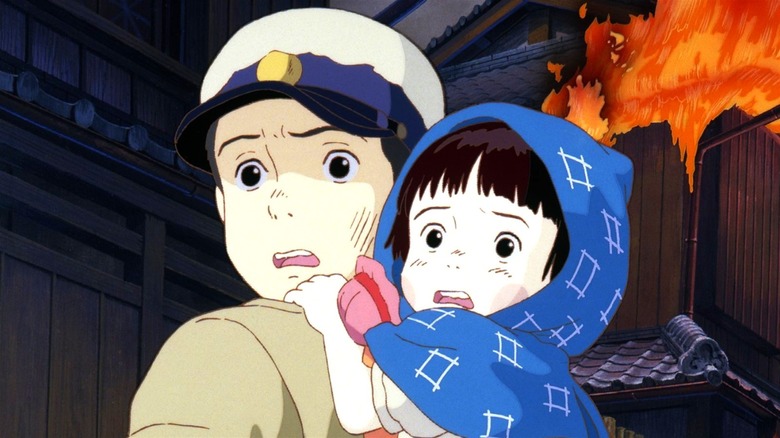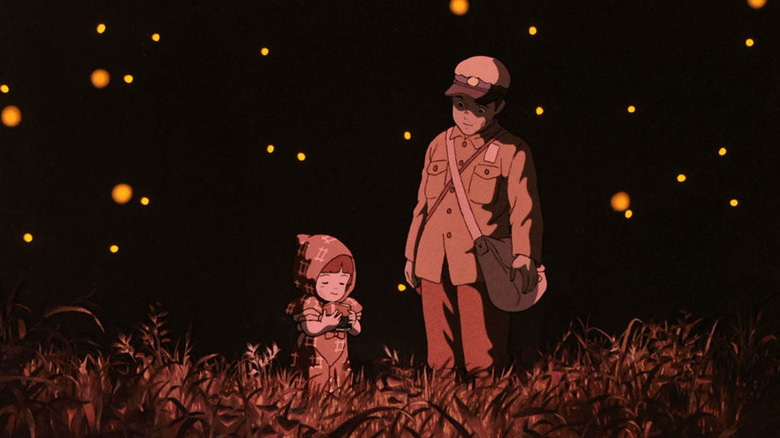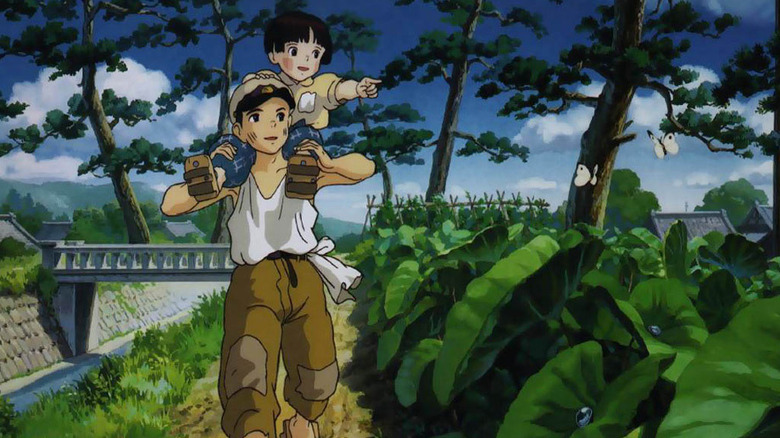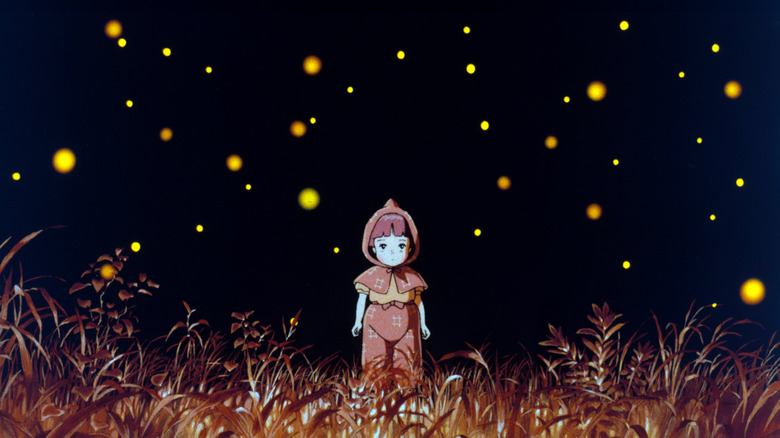The Ending Of Grave Of The Fireflies Explained
In the United States, animated movies tend to tell fairly child-oriented, uplifting stories. Things can get dark, but there's always a light at the end of the tunnel. While that's sometimes true for animation in other countries, there are also animated foreign films that tell stories that are as dark as anything you could see in a live action story. Isao Takahata's "Grave of the Fireflies" is one such film which tells a realistic, depressing story.
The film follows a young boy named Seita and his younger sister, Setsuko, in the final months of World War II in Japan. Their house is destroyed in an air raid, and their mother dies as a result of severe burns. After their mother dies, Seita and Setsuko go to live with their aunt, who convinces them to sell many of their mother's possessions as rations shrink. Eventually, Seita and Setsuko decide to set off on their own, leaving their aunt's home to live in an abandoned bomb shelter. Their journey is one of the most tragic stories in all of animation, but as the film reaches its ending, all hope is not lost.
Grave of the Fireflies ends in tragedy
Seita and Setsuko set out on their own because their aunt is rude and abrasive, but it ultimately proves to be a fateful decision. Eventually, Setsuko begins to suffer from malnutrition, and Seita is forced to cash in the last piece of their savings to buy her some food. By the time he's returned to Setsuko with food, she's hallucinating, and she succumbs to illness while Seita is preparing a meal for her.
Seita decides to burn her body, and carries her ashes around with him in a tin can, along with a picture of their father, who most likely died during the war. In the opening moments of the movie, we see Seita die of starvation in a train station during the last days of the war. In the final moments of the movie, we return to that scene, and see Seita and Setsuko's spirits board a train. They eventually arrive at their destination, and look out on the present day city of Kobe.
The film is about the huge costs of war
There have been plenty of movies that focus on the enormous cost of war for those who do the fighting. "Grave of the Fireflies" serves as a reminder, though, that there are plenty of casualties of war that had no role in waging it. Seita and Setsuko are innocent children who lose everything as a result of a war that had nothing to do with them.
The devastatingly bleak ending of "Grave of the Fireflies" is all about the lives that these two children never got to live because an air raid took the only home they'd ever known. Seita is not blameless in the fate that befalls him and his sister, but his bad decisions don't justify his painful death. He was just a boy, and he should never have been put in a position where he was the only thing between his sister and death.
For American audiences, "Grave of the Fireflies" is a harsh reminder that when we flatten out the humanity of our enemies, many innocent people suffer. In the heat of World War II, it was easy to see Japan as the enemy, but that doesn't mean every Japanese person deserved to die.
Setsuko and Seita get to rest in peace
The deaths of Seita and Setsuko are horrible, unnecessary tragedies. Thankfully, though, the movie doesn't end on the moment of their deaths. Instead, it shows us their spirits watching over the world, and leaves audiences with a feeling that they may have found peace in the wake of all the tragedy they endure.
Seita and Setsuko's final peace doesn't negate the unjustness of their deaths. Instead, it somehow reinforces the feeling that what happened to them was fundamentally unfair. In ending on a moment of beauty, we see all that was lost in one of the darkest parts of Japan's history. Children who perished are part of the country's history, and the fact that they find peace doesn't mean that what they went through was any less horrible. "Grave of the Fireflies" ends in a moment of pure grace, but that doesn't negate the tragic story that unfolds on the screen.



